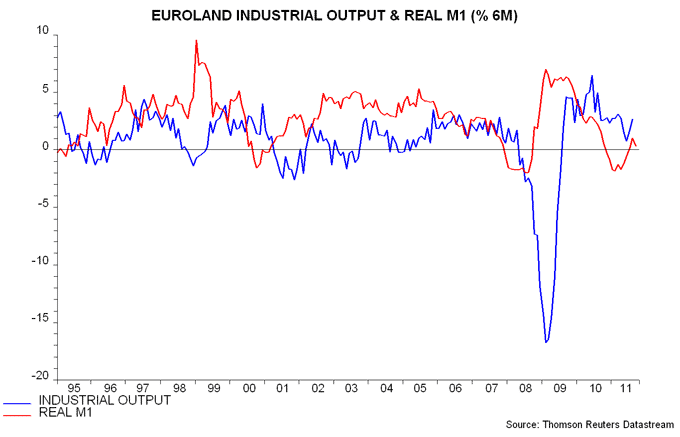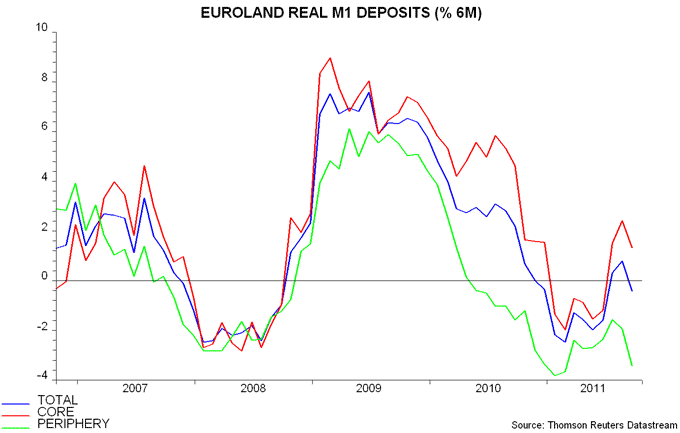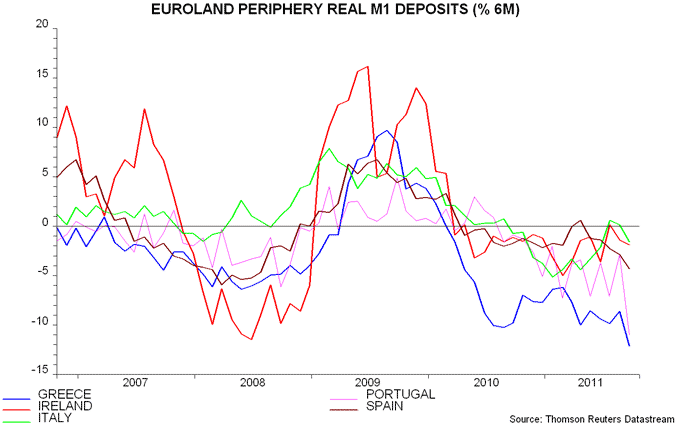Rescue deal at risk from peripheral monetary contraction
Eurozone monetary statistics for September suggest a deepening recession in the periphery. The ECB must ease aggressively to head off this prospect and prevent a rapid unravelling of the latest rescue package.
The current Eurozone recession, like its 2008-09 predecessor, was signalled in advance by a contraction of inflation-adjusted narrow money M1 – see first chart below. Eurozone-wide real M1 fell by 1.7% (not annualised) in the six months to April 2011, when the ECB locked into recession by raising interest rates, echoing its July 2008 policy mistake.
The six-month change in real M1 moved back into positive territory in July and August, holding out hope that the recession might be short and shallow, involving modest GDP declines in the fourth quarter of 2011 and first quarter of 2012. This prospect, however, has dimmed with today’s September figures showing growth slipping back to just 0.3%.
More worrying still is the country breakdown of M1 deposits – recent growth has been confined to the core with an accelerating decline in the periphery. (The ECB publishes country data on deposits but not holdings of notes and coins.) Aggregate real M1 deposits in Greece, Ireland, Italy, Portugal and Spain fell by 3.4%, or 6.7% annualised, between March and September, the largest six-month decline since February – second chart.
The third chart provides country detail, showing a new extreme in the rate of Greek real M1 deposit contraction – an astonishing 12.2% over six months, or 22.8% annualised. Portugal, meanwhile, appears to have entered a Grecian vortex and monetary trends have deteriorated sharply in Spain, with a six-month decline of 4.3%, or 8.4% annualised. Trends are less awful in Ireland and Italy, suggesting that both are rescuable if the ECB acts sufficiently aggressively.
What is required? An immediate reversal of the quarter-point April and July rate hikes is a minimum but the ECB probably also needs to inject liquidity directly via a UK-style QE programme of sovereign bond purchases, though spread across national markets in proportion to GDPs, in keeping with a monetary policy operation rather than the backdoor fiscal bail-out represented by the current “securities markets programme”.




Reader Comments